

 marcopolo@chinatoursnet.com
marcopolo@chinatoursnet.com
Home / Shanghai Layover Tour / Detail
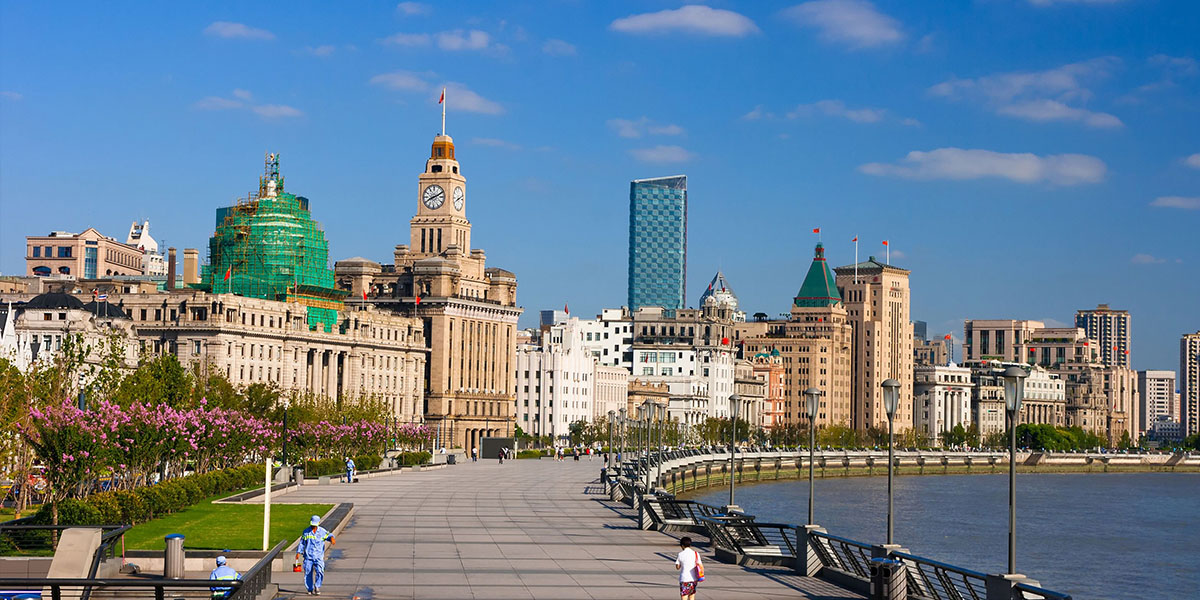
Bund
.png)
.png)

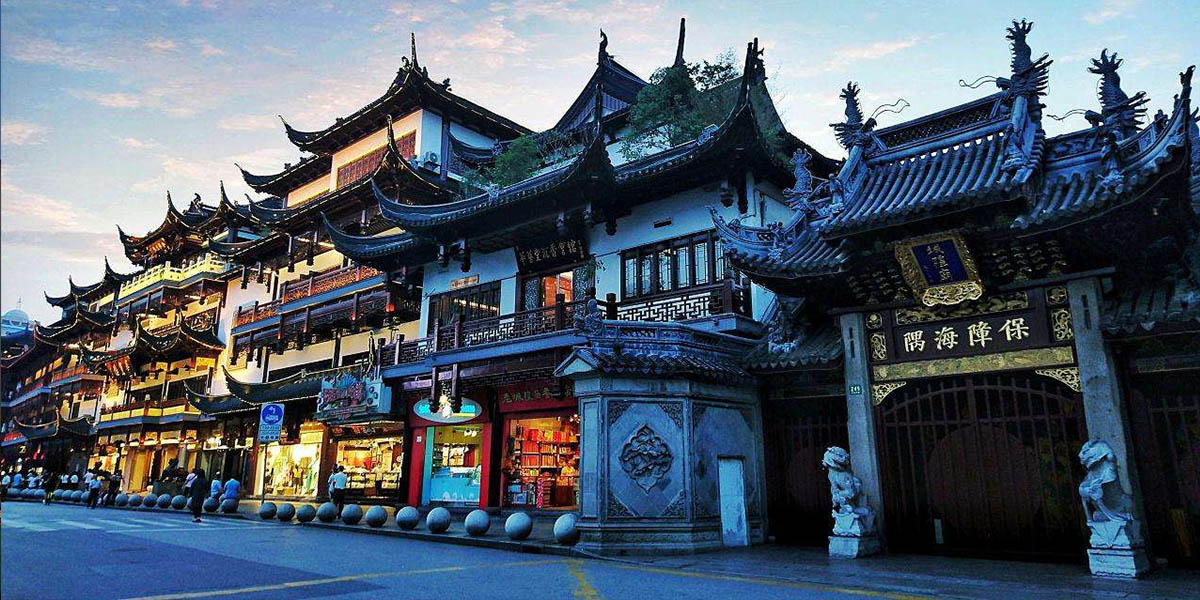
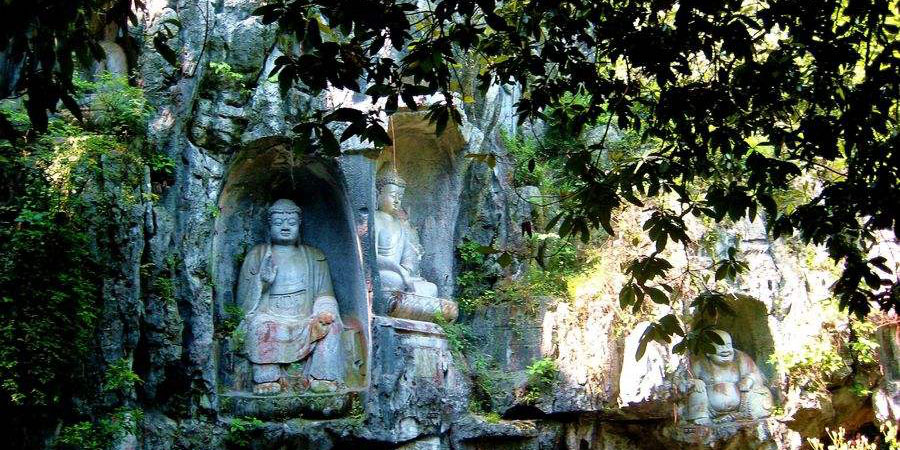

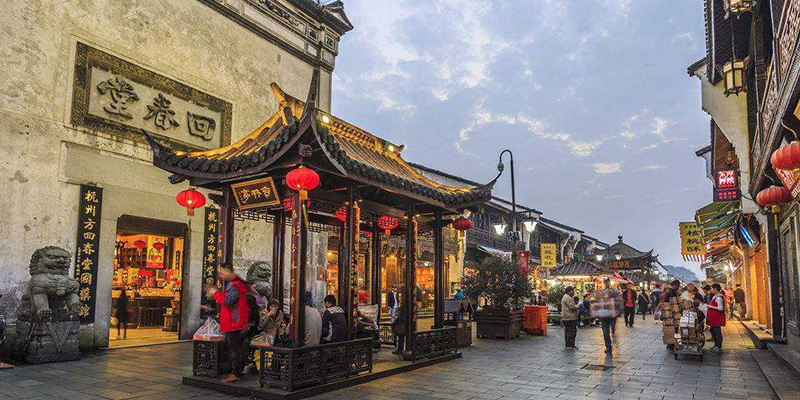
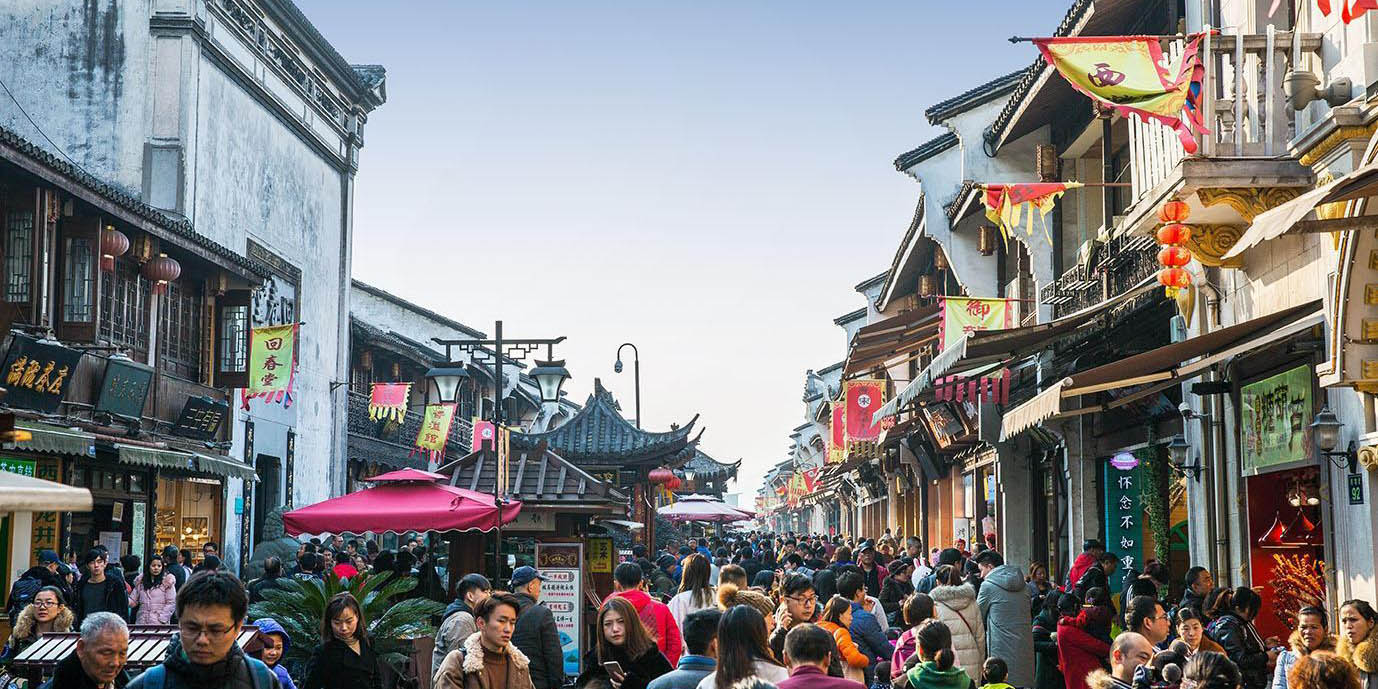
144 Hours Visa-free Shanghai Suzhou Hangzhou Tour with Airport Transfer
1 Person $1404 $ 1404
2 Person $853 $ 853
3 Person $662 $ 662
4 Person $645 $ 645
5 Person $565 $ 565
6 Person $523 $ 523
7 Person $477 $ 477
8 Person $454 $ 454
9 Person $422 $ 422
10 Person $393 $ 393
10> Person $393 $393

Travel personnel
Number of rooms
Total Price $0
00
:00
:00
:0
Our company offers you unforgettable travel at do not calculate the cost price, Please make sure to share our website and your travel videos and photos. Thank you
According to your travel date, if you are the first to participate layover group tour, please click initiate group tour booking and wait for others to join. If you're a solo traveler will inform you by email latest two days before your travel date whether the group is successfulIf.
If we have a reservation for your travel date, please click to join the tour. Please pay according to the number of bookings of your team. The final price is determined by the number of people in the group.
This is the best way for you to save money and enjoy a pleasant layover tour. In order to form a group as soon as possible, please share this tour details to your circle of friends and social media.
Warm Tip:
For the group tour there are two times departure: 7 A.M / 9A.M
Please according your layover time to choose, you will need around 1.5-2 hours to apply your Free Visa transit after arrival at the airport.
Share our tour itinerary on Facebook and Twitter, each applicant needs to share 20 people to register as our members, within the specified time. Will succeed in getting free travel. The travel date is unlimited.
The member registration must be true information. If there is any fake, the free travel qualification will be cancelled
The number of members who complete the membership registration requirements within 24 hours can get free travel, which is invalid if it is out of time.
 marcopolo@chinatoursnet.com
marcopolo@chinatoursnet.com


Phone:+86-13683536536
WhatsApp/iMessage:+86-13683536536
WeChat:chinatoursnet
Make full use of 144-hours free visa policy to visit the golden triangle cities-Shanghai, Suzhou and Hangzhou. Immerse yourself in the ancient and beautiful Suzhou, visit UNESCO-listed Humble Administrator’s Garden, absorb Chinese history from Panmen Gate; Tour one of outstanding Water Town-Tongli, In Hangzhou, visit famous Feilai Peak and Linyin Temple, and cruise on charming West Lake, sip Longjing tea at Mei Jia Wu Tea Village. Amaze at modern and ancient Shanghai from Former French Concession, Shanghai Tower etc.
Day 1
Airport Pickup
Day 2
Humble Administrator’s Garden
Shantang Street
Lunch
Panmen City Gate
Day 3
Tongli Water Town
Lunch
Hefang Street
Day 4
Feilai Peak
Lingyin Temple
West Lake
Lunch
Mei Jia Wu Tea Village
Day 5
Jade Buddha Temple
Former French Concession
Yu Garden
City God Temple Bazaar
Lunch
Bund
Shanghai Tower
Day 6
Transfer to Airport
Tour Itinerary:
Open >>
Day 1 Airport Pickup
.png)
Be met our tour guide at Shanghai Hongqiao/Pudong International Airport arrival hall, our guide will hold a sign with your name on and wait for you. (You will need about 1-1.5 hours to finish the custom clearance and get out). If you have energy and time, your professional tour guide will give you some sites to explore on your own.
Day 2 Humble Administrator’s Garden, Shantang Street, Lunch, Panmen City Gate
.png)
~ 2 h : Drive to Humble Administrator’s Garden
~ 2 h : Visit Humble Administrator’s Garden
![]() Start to visit the Humble Administrator's Garden to appreciate the largest and UNESCO-listed garden. With water as the center, this lovely garden is distributed of mountains and rivers, beautiful halls and pavilions, luxuriant flowers and trees, and has strong characteristics of Jiangnan water town.
Start to visit the Humble Administrator's Garden to appreciate the largest and UNESCO-listed garden. With water as the center, this lovely garden is distributed of mountains and rivers, beautiful halls and pavilions, luxuriant flowers and trees, and has strong characteristics of Jiangnan water town.
~ 20 min : Drive to Shantang Street
~ 1.5 h : Visit Shantang Street
![]() View the Song, Yuan, Ming, and Qing buildings here before strolling along canalside Shantang Street. Pass boats and bridges, and learn about Suzhou’s centuries-old Wu culture as you watch waterside life.
View the Song, Yuan, Ming, and Qing buildings here before strolling along canalside Shantang Street. Pass boats and bridges, and learn about Suzhou’s centuries-old Wu culture as you watch waterside life.
~ 0 min : Drive to Lunch
~ 1 h : Meal time
![]() Enjoy local delicious lunch.
Enjoy local delicious lunch.
~ 20 min : Drive to Panmen City Gate
~ 1.5 h : Visit Panmen City Gate
![]() This grand two-storey gate-Panmen City Gate, surrounded by landscaped gardens and ancient monuments, once formed part of Suzhou's ancient city wall and still offers stunning views across Suzhou, old and new.
This grand two-storey gate-Panmen City Gate, surrounded by landscaped gardens and ancient monuments, once formed part of Suzhou's ancient city wall and still offers stunning views across Suzhou, old and new.
Day 3 Tongli Water Town, Lunch, Hefang Street
.png)
~ 1 h : Drive to Tongli Water Town
~ 2.5 h : Visit Tongli Water Town
![]() Set out on a half day of sightseeing Tongli Water Town, a totally different experience that makes you feel like you're in another time in the past. You'll explore its Retreat and Reflection Garden, Chongben Hall, Jiayin Hall, Pearl Tower, Three Bridges.
Set out on a half day of sightseeing Tongli Water Town, a totally different experience that makes you feel like you're in another time in the past. You'll explore its Retreat and Reflection Garden, Chongben Hall, Jiayin Hall, Pearl Tower, Three Bridges.
~ 0 min : Drive to Lunch
~ 1 h : Meal time
![]() Enjoy local lunch at a restaurant.
Enjoy local lunch at a restaurant.
~ 2 h : Drive to Hefang Street
~ 1.5 h : Visit Hefang Street
![]() Hefang Street has many interesting stores and vendor kiosks selling silk clothing, tea, toys, souvenirs, freshly made pastries and other street foods. You can explore souvenirs you like and taste local food.
Hefang Street has many interesting stores and vendor kiosks selling silk clothing, tea, toys, souvenirs, freshly made pastries and other street foods. You can explore souvenirs you like and taste local food.
Day 4 Feilai Peak, Lingyin Temple, West Lake, Lunch, Mei Jia Wu Tea Village
.png)
~ 20 min : Drive to Feilai Peak
~ 1 h : Visit Feilai Peak
![]() Appreciate lifelike stone scupltures along the Feilai Peak.
Appreciate lifelike stone scupltures along the Feilai Peak.
~ 0 min : Drive to Lingyin Temple
~ 1 h : Visit Lingyin Temple
![]() Lingyin Temple boasts dozens of pagodas, pavilions and halls. Appreciate the wooden artifact of the Buddhas on the gigantic wall and learn Chinese Buddha culture.
Lingyin Temple boasts dozens of pagodas, pavilions and halls. Appreciate the wooden artifact of the Buddhas on the gigantic wall and learn Chinese Buddha culture.
~ 20 min : Drive to West Lake
~ 2.5 : Visit West Lake
![]() Take a boat to enjoy the beautiful scenery of West Lake.
Take a boat to enjoy the beautiful scenery of West Lake.
~ 15 min : Drive to Lunch
~ 1 h : Meal time
![]() Savor local lunch at a tea farmer's house.
Savor local lunch at a tea farmer's house.
~ 30 min : Drive to Mei Jia Wu Tea Village
~ 1.5 h : Visit Mei Jia Wu Tea Village
![]() Visit Mei Jia Wu Tea Village, enjoy a large field of Longjing Tea and you can sip a cup of tea as well. At last, return to hotel in Shanghai.
Visit Mei Jia Wu Tea Village, enjoy a large field of Longjing Tea and you can sip a cup of tea as well. At last, return to hotel in Shanghai.
Day 5 Jade Buddha Temple, Former French Concession, Yu Garden, City God Temple Bazaar, Lunch, Bund, Shanghai Tower
.png)
~ 20 min : Drive to Jade Buddha Temple
~ 1 h : Visit Jade Buddha Temple
![]() Built in 1882, the temple is noted for two jade statues of Sakyamuni brought from Burma. It is famous at home and abroad with its jade Buddha Statues.
Built in 1882, the temple is noted for two jade statues of Sakyamuni brought from Burma. It is famous at home and abroad with its jade Buddha Statues.
~ 30 min : Drive to Former French Concession
~ 1 h : Visit Former French Concession
![]() Listen as your guide explaining the historical scene and lead your attention to cobbled streets and wrought-iron railings reminiscent of 19th-century Paris. Absorbs the botanical beauty of a French-style park during your stroll.
Listen as your guide explaining the historical scene and lead your attention to cobbled streets and wrought-iron railings reminiscent of 19th-century Paris. Absorbs the botanical beauty of a French-style park during your stroll.
~ 20 min : Drive to Yu Garden
~ 1 h : Visit Yu Garden
![]() Visit the Yu Garden with a beautiful lotus pond, a bridge and a pavilion in the center. Take a stroll on the bridge and enjoy the scenery along the bank.
Visit the Yu Garden with a beautiful lotus pond, a bridge and a pavilion in the center. Take a stroll on the bridge and enjoy the scenery along the bank.
~ 0 min : Drive to City God Temple Bazaar
~ 30 min : Visit City God Temple Bazaar
![]() Then continue to the City God Temple Bazaar with all kinds of goods, including artworks, jewelry, clothes, snacks, souvenirs, toys, and special folk handicrafts.
Then continue to the City God Temple Bazaar with all kinds of goods, including artworks, jewelry, clothes, snacks, souvenirs, toys, and special folk handicrafts.
~ 0 min : Drive to Lunch
~ 1 h : Meal time
![]() Enjoy delicious lunch.
Enjoy delicious lunch.
~ 15 min : Drive to Bund
~ 45 min : Visit Bund
![]() Move on to the architectural complex of the Bund on Shanghai's waterfront, the symbol of ancient and modern Shanghai.
Move on to the architectural complex of the Bund on Shanghai's waterfront, the symbol of ancient and modern Shanghai.
~ 20 min : Drive to Shanghai Tower
~ 1 h : Visit Shanghai Tower
![]() Visit Shanghai Tower, the tallest building in China (the 2nd tallest in the world). The observatory of “Shanghai Tower” is with a height of 632 meters, and you can have a panoramic view of the whole city with 360 degrees dimension. It is a really unique experience on the top.
Visit Shanghai Tower, the tallest building in China (the 2nd tallest in the world). The observatory of “Shanghai Tower” is with a height of 632 meters, and you can have a panoramic view of the whole city with 360 degrees dimension. It is a really unique experience on the top.
Day 6 Transfer to Airport
.png)
~ 1-1.5 h : Transfer to Airport
![]() Your driver and tour guide will pick you up at the appointed time then send you to the airport.
Your driver and tour guide will pick you up at the appointed time then send you to the airport.
Hotel in Shanghai
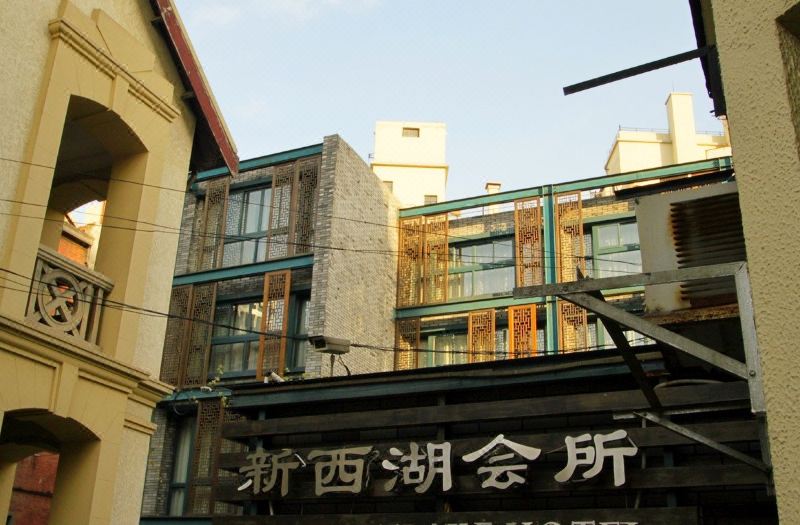
Hotel Name : Shanghai New West Lake Hotel
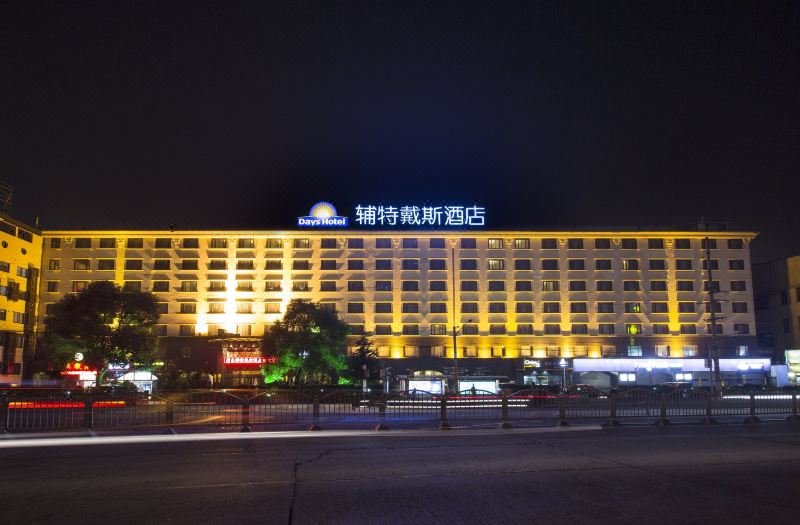
Hotel Name : Days Hotel (New International Exhibition Center)
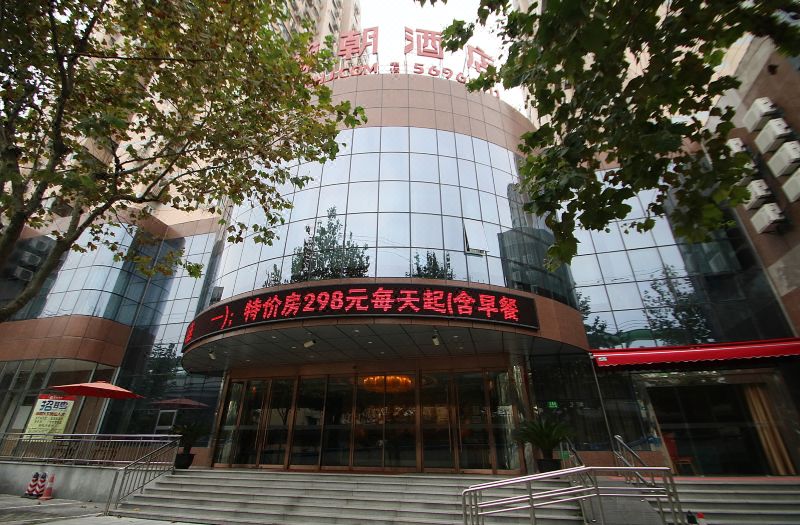
Hotel Name : Hanchao Hotel
Hotel in Suzhou
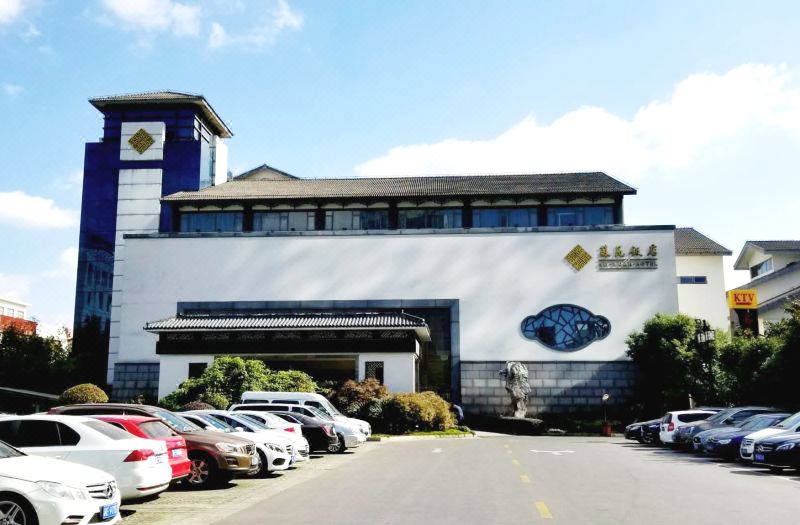
Hotel Name : Suyuan Hotel
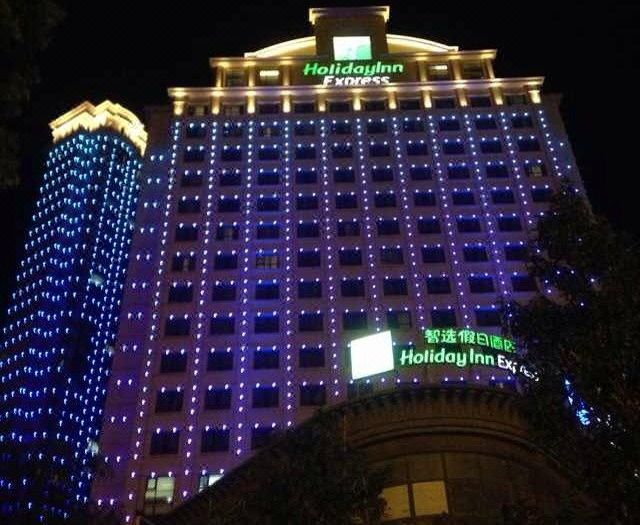
Hotel Name : Holiday Inn Express Suzhou Changjiang
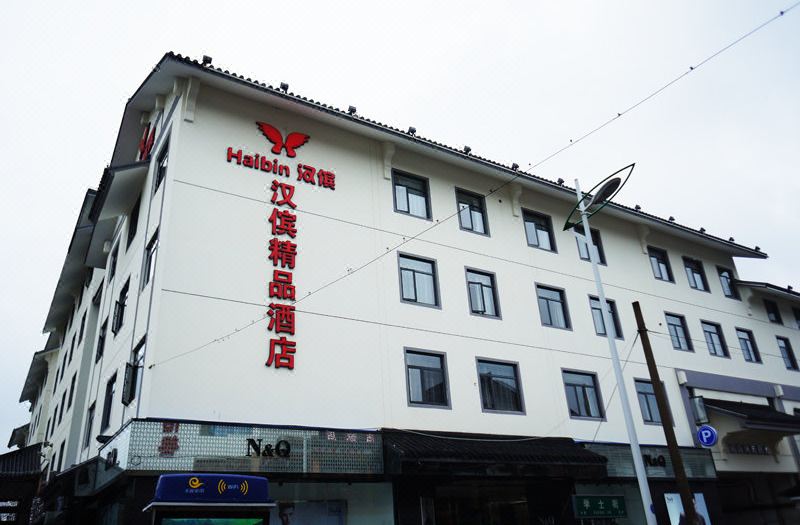
Hotel Name : Haibin Boutique Hotel
Hotel in Hangzhou
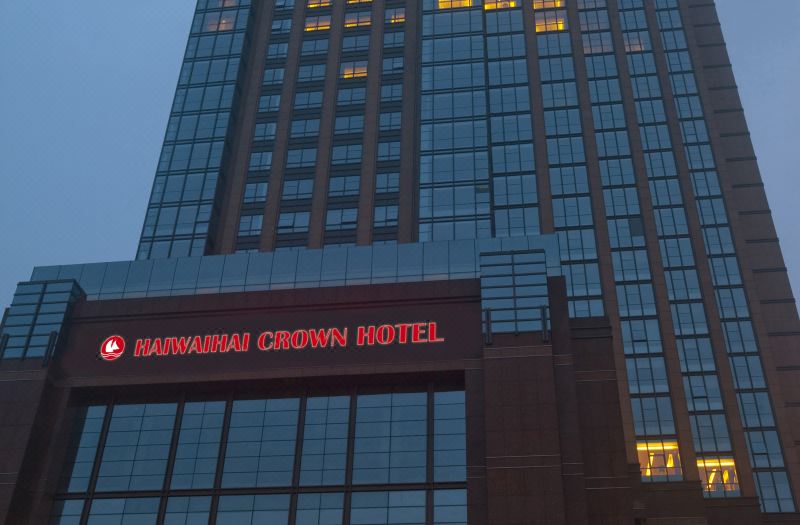
Hotel Name : Haiwaihai Crown Hotel
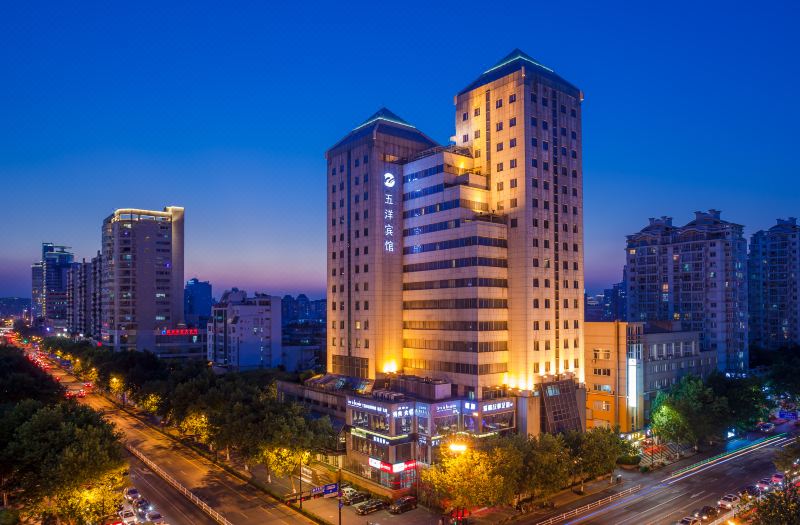
Hotel Name : Wuyang International Hotel
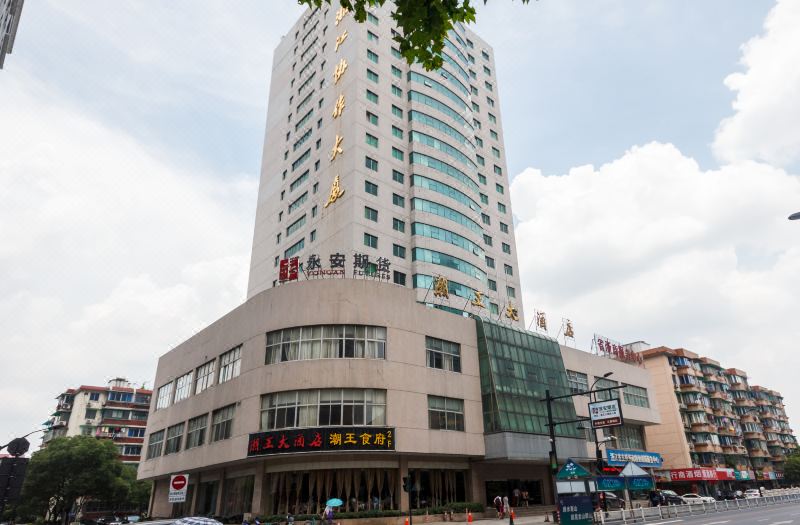
Hotel Name : Chao Wang Hotel
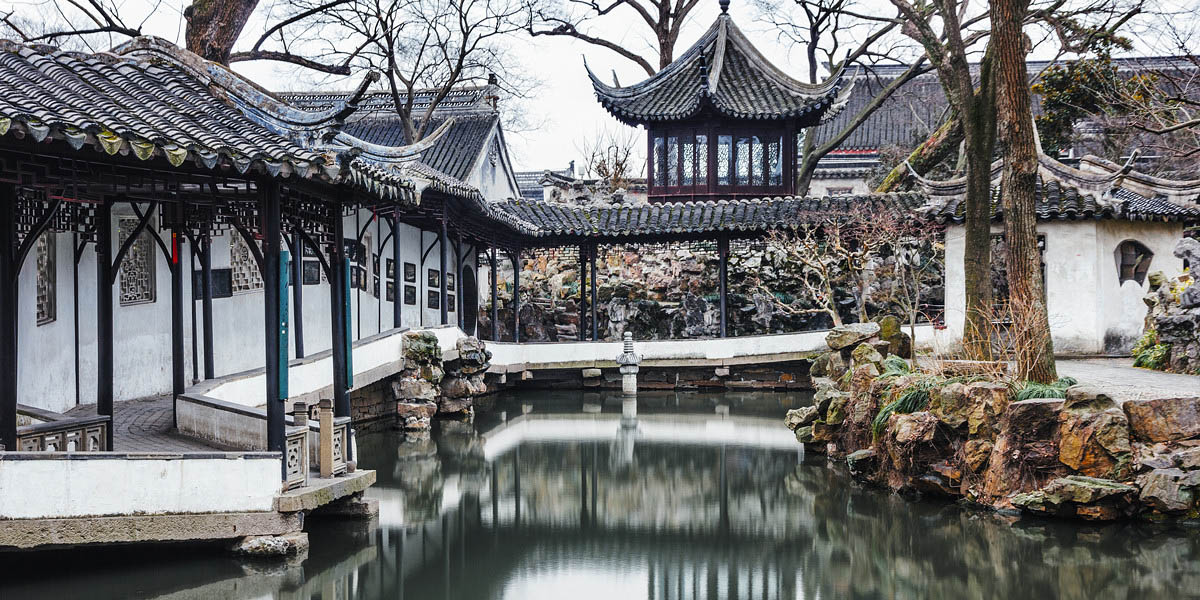
.png)
.png)
.png)
.png)
The gardens of Suzhou have been designated a UNESCO World Heritage Site,recognized as major repositories of cultural achievement.Parhaps the lord of them all is the Humble Administrator’s Garden,the largest of Suzhou’s gardens.If you can only see one garden while in Suzhou,this one is highly recommended.About 60% of its area is water and there is an extensive network of paths and bridges following streams that culminate in a magnificent for resting and taking in the striking views and a lovely home that features the Mandarin Duck Hall.This is an excellent collection of bonsai trees at one end of the garden.
The Humble Administrator’s Garden
The Humble Administrator’s Garden was originally built in 1509,also is the fourth year of Zhengde period in Ming Dynasty.It was initially a private garden of a former government offical named Wang Xianchen.
The whole garden consists of 3 parts and some residential buildings.These 3 parts are divided into the easten 、weatern and middle part.Every part has its own distinctive features.The east section lies directly inside the main entrance.It’s dotted with sheer hills, green grasses, dense bamboo and pine forests and winding streams.The Central Section is the cream of the garden, with one-third of its area covered by water. Buildings in varied sizes and shapes are constructed around the central pond lined with exuberant trees and multicoloured flowers reminiscent of the scenery in th south of the Lower Yangtze. Lying at the western end of the central garden, the Western Half Pavilion is the division spot for the central and western sections. A moon gate named Scenery of Exceptional Beauty in the pavilion opens to the western garden with an area of nearly about 8.3 square kilometers. Also centered on a pond, this part remains almost the same as the Supplementary Garden built by a rich merchant in the Qing Dynasty. In designing this garden he introduced lots of new ideas and fancy buildings into his estate. The decorative style adopted here is somewhat lavish.
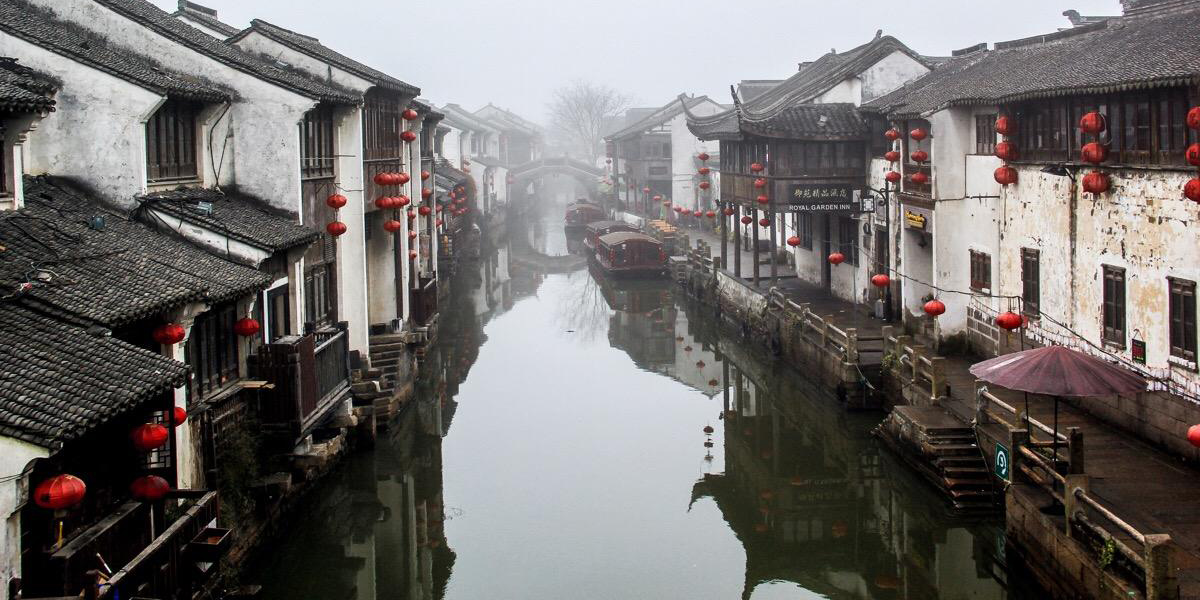
.png)
.png)
.png)
.png)
The Shantang Street,located in Gusu District, northwest of the Suzhou city in Jiangsu Province, is an ancient riverside pedestrian street with almost 1200 years history. It connects bustling district Chang Men(the west gate of the ancient city) in the east with scenic Tiger Hill in the west, with a total length of about seven Li (about 3,829.6 meters ), hence it has got its poetic name “Seven-Li Shangtang”.
The street was constructed parallel with the northern bank of the Shantang River in 825 during the Tang Dynasty, inaugurated by the prestigious poet Bai Juyi who was the Cishi (modern-day equivalent of the prefectural governor) of Suzhou then. The sludge dug out from the construction formed a dam along the north bank of the canal known as Baigong Dam in honor of Bai Juyi. A street was built on dam, which later became the modern-day Shantang Street.It was a eventful and busy the downtown area in the ancient time, where used to be prosperous commercial and transport hub. It is also regarded as “the first street in Divine Land”. Today, this is a heavily touristed area, with visitors attracted by the heritage nature of the buildings and the old stone bridges.
As a national AAAA scenic are, with its unique geographical location, advantageous conditions of water and land transportation and distinctive street style, the Shantang Street has gradually become the display window of Wu culture and the experience of Su-style life. In 2015, the Shantang Street Scenic Area was added to the list of China's "National Historic and Cultural Streets". Along with Pingjiang Road, the street was declared a Historical and cultural block of China.
Shantang Old Street
Praised as “Miniature of Old Suzhou and Window of Wu Culture”, the Shantang Old Street is the essence sector of the whole block extending about with 360 meters. Ancient architectures with typical characteristics of Jiangnan Region (refers to south China in the lower reaches of the Yangtze River) stand among the both row, lanterns glimmering at night under the eaves, which makes it more attractive for lingering and strolling. It is a commercial hub flourishing with shops, commercial guild halls, specialty commodities. Tourists are welcomed to try various tasteful local food of Suzhou renowned brands and purchase featured handmade souvenirs such as woodcut paintings, sandalwood wood carving, stone carving , exquisite Suzhou embroideries and silk items. Catering services like old tea houses, modern pub and western restaurants can be found everywhere, reflecting a fusion of present time and ancient era, oriental civilization and western culture. Tonggui Bridge and Suzhou Museum of Chamber of Commerce are all sited here.
Tonggui Bridge
There are eight side bridges on the riverbanks and seven bridges spanning across the street just like several rainbows laying above the river. As the landmark of the street, Tonggui bridge is best place to admire the picturesque nscenery of the block on the one hand; on the other hand, the single arch bridge opening, looking like a half moon, can form a perfect circle with its shadow in the water, which presents a splendid full-moon shape. It is recommended to take a cruise in a painted boat to appreciate the gorgeous and fantastic view of Jiangnan taste. It may make you feel like placing yourself in a Chinese ink and wash painting.
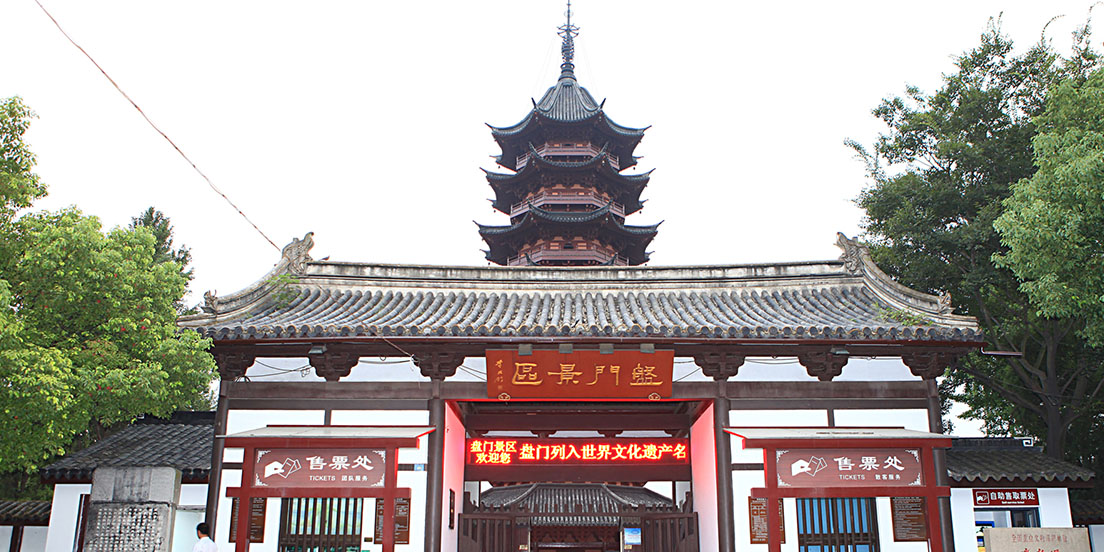
.png)
.png)
.png)
.png)
The gate to Suzhou is said to have more than a 2,400 year history. It is said to have been the only gate in China with both a lower water entrance and an upper land entrance. It was built at a time when a canal moat surrounded Suzhou.The Panmen City Gate is listed as the antique protection unit in Suzhou. Being the ancient building in Yuan Dynasty, the Panmen City Gate was listed as the national key protection unit by the State department. As the only gate connecting water and land, the Panmen City Gate is the symbol for ancient Suzhou. There is a famous saying: Great Wall in the north is famous for magnificence while the Panmen City Gate in the south is famous for elegance.
The Panmen City Gate lies in southwest of city Suzhou. There are the Panmen City Gate,a 1,000-year-old pagoda named Ruiguang Pagoda, the earliest pagoda in Suzhou; and the Wu Bridge, the entrance to the gate. The gate is located on the south-west corner of the Main Canal Suzhou . Originally built during the Warring States Period in the state of Wu, historians estimate it to be around 2,500 years old. Current ancient city gate was built in Yuan Dyansty. There were few renovation in Ming and Qing dynasty. It is composed of two water passages, three land passages and the outside gate. The canal outside the gate is the oldest section of the Grand Canal that was also built 2,500 years ago.
Pan Gate is part of the ancient city wall built in 514 BC. Pan Gate was the only entrance to the wall that surrounded ancient Suzhou. It is also known in China for its architecture. It is so famous for its complex of both land and water city gates. In order to attract more tourists, in recent years, the city of Suzhou has renovated the old wall and built many other attractions around the original gate in the Pan Gate Scenic Area.
The Pan Men Gate is a two-storied red house building with a curved roof. It was built in 1986. However, the house-like building sits on a large solid base that has an arched opening. The canal passed underneath. A sluice gate was lowered to close off access. The first floor has an exhibition of ancient weapons.
The Rui Guang Pagoda has a long history. It is said that a famous figure in Chinese history named Sun Quan had a tower built there for his mother. Sun Quan was a man who founded a state called Wu after the fall of the Han Empire. It is said that he had a 13-story structure built there in 247 AD. It is also said that in 937, as the temple was being repaired, brilliant colorful light was seen above the tower. The form of the present structure may date to 1125. It is said a wealthy man had a seven-story structure built at the spot. The tower was damaged extensively in the 1800s. In 1978, some scriptures, statues, and jeweled articles were found on the third floor. It is said that some of the objects were extremely valuable.
This stone arched bridge was built in the Qing Dynasty period (1644-1911). It is 11 meters (12 yards) high and 66.3 meters (72.5 yards) long. There are 50 steps on both sides.
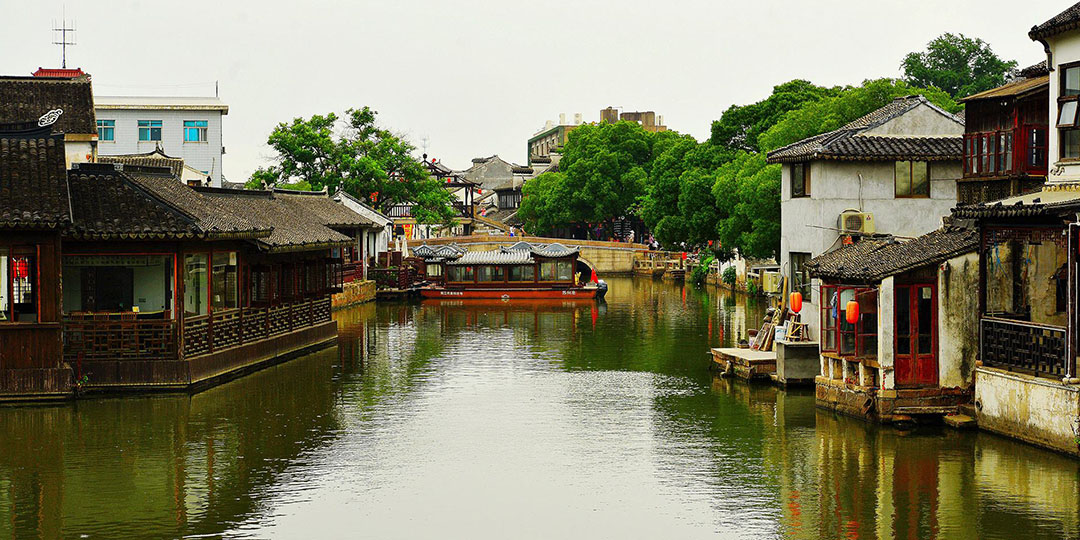
.png)
.png)
.png)
.png)
Introduction
Tongli Water Town is located 18 kilometers from Suzhou and is the most preserved ancient water town in Jiangsu province maintaining affluent history as well as culture. The water town was rather inaccessible saving it from attacks and war damage meaning that most of its ancient structures are really well preserved. For instance its scenic stone bridges, private gardens, temples, and houses are all still standing and were built hundreds of years ago during Ming and Qing dynasty.
Also best referred as the Venice of the east packed with culture, beautiful sprawling architecture and plenty of novelty, its streets echo stories and legends from back in the days with ancient bridges and house complexes. The town has a total of 38 gardens, 55 ancient bridges, 47 temples and hundreds of residences still retaining their traditional styles from the Ming and Qing Dynasties surrounded by 5 lakes from outside and divided by 15 rivers.
Major attractions and activities to do on a visit
Tuisi Garden/ Retreat and Reflection Garden
The most famous location in the town is Tuisi Garden built between 1885 and 1887 by Ren Lansheng. The garden is complete with ancient architecture including small wooden buildings with typical Chinese roofing styles and a perfectly reflecting pond. The atmosphere in the garden makes you get the feeling of an ancient charm from the historic wood building and a delight of rockeries, pavilions, halls, pools, old trees, lovely flowers, adorable fishes and terraces.
The Three Bridges
The three Bridges here are the Taiping Bridge, Changqing Bridge and Jili Bridge which are a must see while on a visit to Tongli water town. Their shape forms the character “品” in Chinese which is a treasure place in the water town. On a visit here you can experience the tradition of crossing the three stone arc bridges important during weddings and special traditional ceremonies which signify luck and happiness to the locals, float through the canals as you enjoy a relaxing, breathtaking and unforgettable gondola ride and also see locals participating in an ancient fish catching cormorant method
Jiayin and Congben Hall
These two halls: the Jiayin and Congben halls are famous for their articulate carvings of ancient Chinese classics. Jiayin hall has gauze cap like beam decorations while Congben hall has exquisite sculptures. The skill put in to bring out the profound cultural connotations that the carvings highlight leave a great impression to every visitor that sets foot in this location.
Gengle Hall
Built during the Ming Dynasty, the hall has seen the rise and fall of several dynasties and has been classified as one of the eight most famous attractions in Tongli. The hall has several interesting spots like the flower tree, figures, the eagle and the lion Not forgetting the very clear pool with red fishes and exquisite winding stone bridges.
Pearl tower
The famous Tower opens up to ancient houses and a wide water garden where you can go back in time where the heartfelt drama and love story between Chen and Fang Qing took place at the Pearl Tower and feel the beauty of the power of love above poverty.
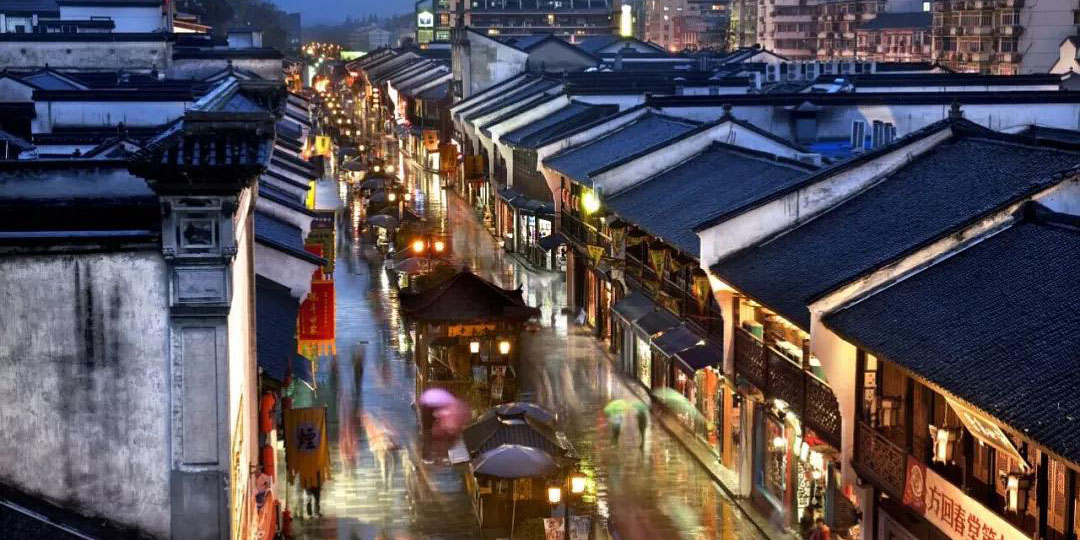
.png)
.png)
.png)
.png)
Hefang Old Street is the one and only best preserved urban area of ancient Hangzhou and is a miniature of the city's history. The legendary Bai'niangzi from an ancient Chinese story had a beautiful love affair in Hefang Street with Xu Xian. Hangzhou was China's capital during the Southern Song Dynasty more than 800 years ago and Hefang Street having many shops, restaurants and taverns. It has passed the test of time after the Yuan, Ming and Qing Dynasties and it is still being a prosperous marketplace today.
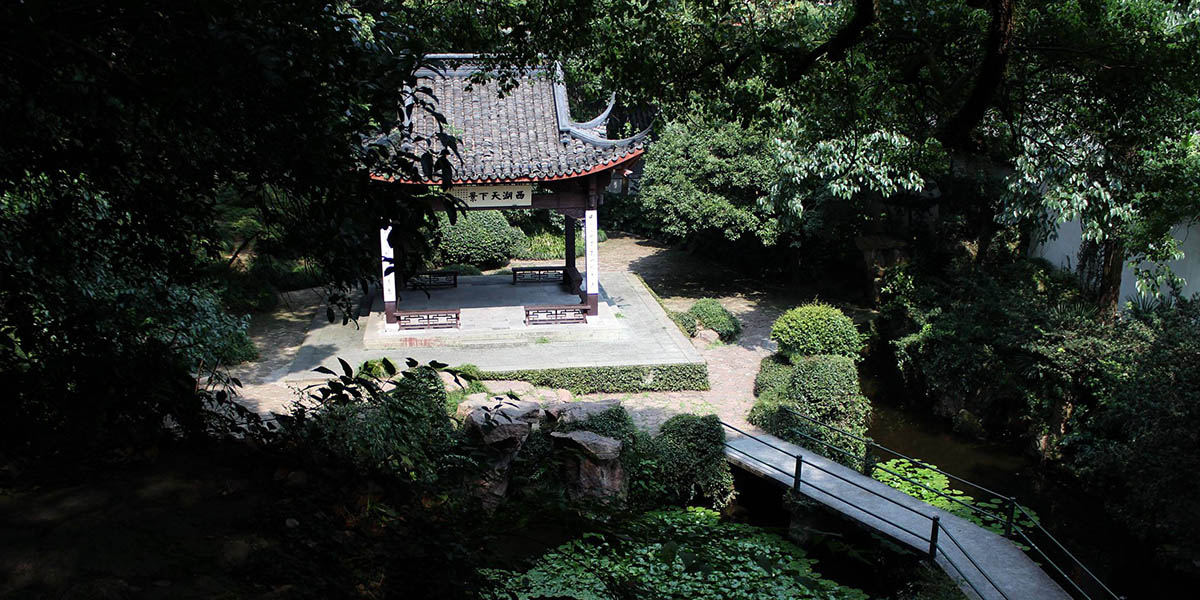
.png)
.png)
.png)
.png)
Feilai Peak, also named Lingjiu Peak, stands in front of Lingyin Temple. It was said that an Indian monk by the name of Huili, upon his arrival in the valley, was surprised to see a mountain towering in the valley. He wondered aloud "when did a mountain fly all the way from India to this place?" - Hence the name. With a height of 209m, Feilai Peak differs dramatically from the surrounding mountains in its composition of pure limestone while the surrounding mountains are of sandstone. Many grotesque stones in the shapes of a charming dragon, a prostrate tiger, a walking elephant, and a scared ape are scattered about the mountainside. Their unusual colors make this mountain distinctive among the nearby hills and mountains. Yuandao, a celebrity of the Ming Dynasty (1368-1644 AD), praised the Feilai Peak as number one in comparison with all other hills and mountains around the West Lake.
According to legend, the mountain had flown all round and destroyed many villages before it settled down in Hangzhou. In order to prevent it from further flying and causing more damage, over 500 Buddha statues which date from the 10th to 14th centuries were carved out of the stone to suppress the mountain. The biggest Buddha image is the Maitreya with cloth bag on shoulder, otherwise known as the Buddha of Joy. With exposed breast and belly, it has occupied a cliff along the brook, laughing since the Northern Sung Dynasty (960-1279 AD) up to now.
Feilai Peak is so dissimilar from other hills near West Lake that there is no doubt that it truly is a foreign guest to the landscape. Many of these stone statues are quite unique and have unparalleled values in the art history, so they represent the highest level of stone carving grottoes in South of China.
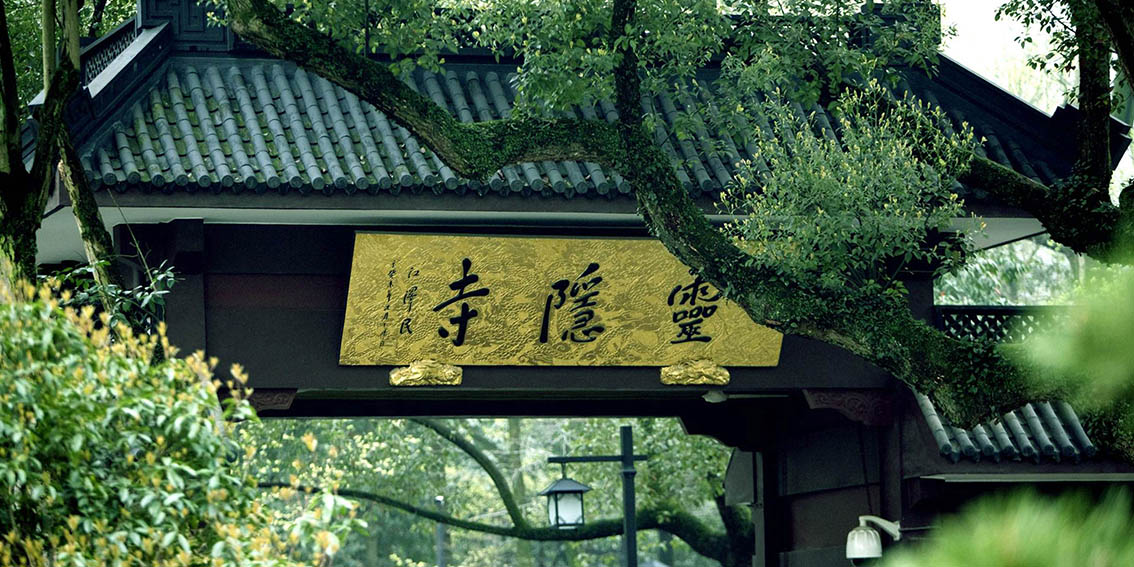
.png)
.png)
.png)
.png)
Lingyin Temple is a Buddhist temple of the Chan sect located north-west of Hangzhou, Zhejiang Province, People's Republic of China. The temple's name is commonly literally translated as Temple of the Soul's Retreat.
It is one of the largest and wealthiest Buddhist temples in China, and contains numerous pagodas and Budddhist grottoes.The monastery is the largest of several temples in the Wulin Mountains, which also features a large number of grottos and religious rock carvings, the most famous of which is the Feilai Feng (literally "the peak that flew hither").
Lingyin Temple
Layout of Lingyin Temple
The main axis of Lingyin follows a traditional Song dynasty five-hall Chan sect structure. The main axis stretches up the Lingyin Hill. However, the five-hall axis is a recent recreation. Only the front three halls are a part of the Qing dynasty axis.
Hall of the Heavenly Kings: The formal entrance of the temple is the Hall of the Heavenly Kings. This hall is a double-eaved building. The front of the building carries a plaque ( literally "Chan temple of the Clouds and Forests"), written by the Kangxi Emperor. The principal statue in this hall is that of the Maitreya Buddha in his manifestation as the cloth bag monk, or the Laughing Buddha. At the back, facing up the hill, is the Skanda Buddha, or Weituo as he is known in Chinese. This statue dates from the Southern Song Dynasty. Being 800 years old this is the oldest and most important statue in the temple. Arranged along the left and right are the Four Heavenly Kings. The ceiling is ornately painted and decorated with phoenixes and dragons.
Lingyin Temple
The four heavenly kings are imposing. Visitors to the temple are often impressed by the size and majesty of the entrance hall and its statues of the heavenly kings. Indeed, the hall of the Heavenly Kings at the Lingyin Temple is as large or larger than the main hall at many temples, reflecting its status as the centre of Buddhism in south-eastern China.
Lingyin Temple
The Hall of the Heavenly Kings is the formal entrance to the temple. However, this entry has been closed in recent years, with visitors funneled instead through side doors, where separate ticket offices are set up for admission to the temple.
Grand Hall of the Great Sage: The second and principal hall is the Mahavira Hall, or the Grand Hall of the Great Sage. It is separated from the Hall of the Heavenly Kings by a large courtyard, featuring a raised lawn bordered with trees. To the left of the courtyard stands the Hall of the Five Hundred Arhats. The Grand Hall of the Great Sage is triple eaved and stands 33.6 metres tall. It houses, as is traditional, a statue of Shakyamuni, the historical Buddha. The present statue was carved in 1956 from camphor wood in Tang Dynasty style and coated with 60 taels of gold. It is the largest wooden Buddhist statue in China. At the back of the main statue is a statue of Guanyin, backed by a large screen that features the carved images of some 150 Buddhist personalities, including the pilgrims of the Journey to the West, Daoji, and arhats. Arranged along the sides of the hall are images of the 18 principal arhats, and other prominent Buddhists. The interior of the hall reaches about 30 metres, with a gold-painted ceiling featuring base relief images of traditional Buddhist symbols.
Lingyin Temple
The Hall of Five Hundred Arhats, also a modern addition, faces onto the western side of the courtyard in front of the main hall. The building has a complex floor plan, shaped like a Buddhist swastika. Along the arms of the swastika are arranged the five hundred arhats as slightly larger-than-life bronze statues. Each statue is seated on a unique ornate seat. At the centre, where the arms of the swastika join, stands a bronze canopy housing statues of four bodhisattvas representing the four cardinal directions. This is currently the tallest solid bronze structure in the world.
Lingyin Temple
The Feilai Feng Grottoes
Feilai Feng, or "the Peak that Flew Hither", also commonly translated as "Flying Peak", is located in front of the temple proper. The peak is so-named because it is made of limestone, giving it a craggy appearance very different from the surrounding mountains. Legend holds that the peak was originally from India (with some versions suggesting that it is Vulture Peak), but flew to Hangzhou overnight as a demonstration of the omnipotence of Buddhist law. A large number of carvings dot the surface of the peak. More are located in various caves and grottoes throughout the peak. Within the main cave, dedicated to the bodhisattva Guanyin, there is a crack in the ceiling of the cave that stretches up to the surface, so that a person standing at a certain position can see a sliver of sunlight. This is known as the "one thread of heaven".
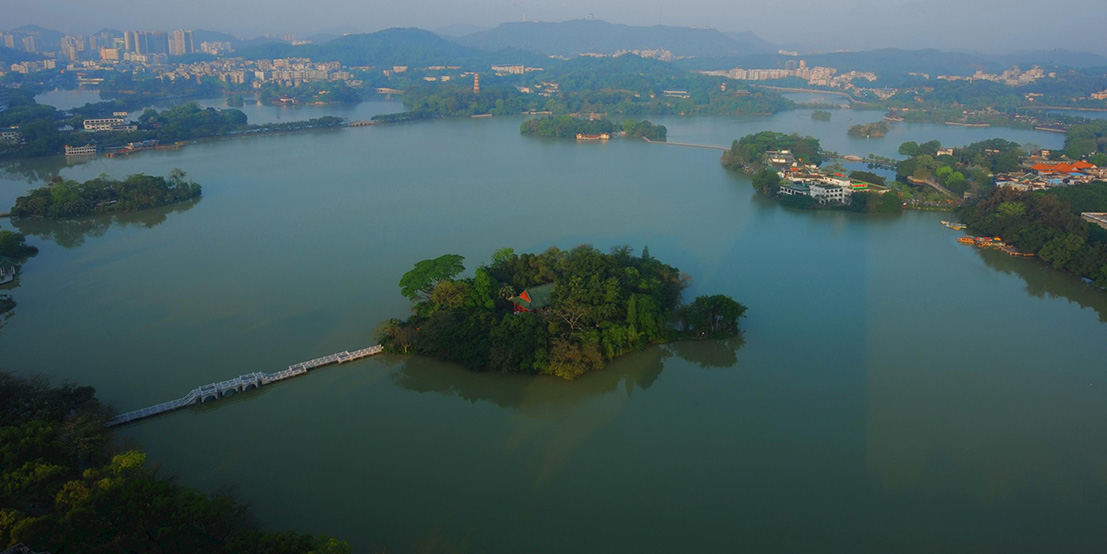
.png)
.png)
.png)
.png)
West Lake (Xihu)
An old Chinese saying declares the beauty of Suzhou and Hangzhou: "There is a paradise in heaven, Suzhou andHangzhou on earth." Centuries later, Marco Polo called Hangzhou the most enchanting city in the world. This charm is most evident in the West Lake (also known as Xihu) area which effectively functions as the center of Hangzhou. The lake is surrounded by hills on three sides while Hangzhou city itself is on the eastern shore. Ancient Chinese people praised the area around West Lake as a land of intoxicating beauty. Su Shi, a poet in the Song Dynasty, compared West Lake to Xi Zi, the most beautiful woman in ancient China. These poetic sentiments leave one in no doubt of the glory of the scenery that inspired them.
The long beach and blooming lotus make a picturesque West LakeIt is kind of summer romance to sail on the pretty West Lake
Although a dam was built, West Lake was still naturally shallow and silted up, making navigation and commerce on the lake difficult to impossible. Around 1090 AD, Hangzhou governor Su Shi oversaw the dredging of West Lake to try and fix the problem. The waste dredged from the lake was used to construct a causeway. This new "Su Causeway" stretched for 2.6 kilometers (1.6 miles). It is lined with weeping willow, hibiscus and magnolia trees, and is interconnected by six stone bridges. You can still go for a stroll along the causeway and through the weeping willows and picture the thousands of workers deepening the lake almost one millennium ago.
It is fascinating and relaxing to stroll on the causeway of West Lake in the eveningA bird's eye view of the spectacular West Lake
To understand better about the beauty of the West Lake, visitors should know about the "Ten Scenes of the West Lake" (also 10 Scenic Spots in Xihu), are ten best-known scenic spots of or next to the West Lake. They are: Dawn on the Su Causeway in Spring, Curved Yard and Lotus Pool in Summer, Moon over the Peaceful Lake in Autumn, Remnant Snow on the Bridge in Winter, Leifeng Pagoda in the Sunset, Two Peaks Piercing the Clouds, Orioles Singing in the Willows, Fish Viewing at the Flower Pond, Three Ponds Mirroring the Moon, and Evening Bell Ringing at the Nanping Hill. These ten distinctive scenes make the West Lake a charming fairyland with endless interest.
West Lake is the pride of Hangzhou, and a favorite spot to escape the hustle and bustle of the modern city, After work or on weekends, city-dwellers leave their concrete, noise pollution, and hectic schedules behind to meet along the shores of West Lake to stroll or "eat some tea," (an expression the Chinese use for drinking a cup of tea full of Dragonwell tea leaves). Don't miss the chance to visit this charming place and find out why the locals have treasured it so much for so long. If you do come, spring is the best time to visit Hangzhou. Flowers and blossoming fruit trees will be abundant, lining the lake and causeways while filling the air with sweetness and romance.
Ten Scenes of West Lake
Traditionally, there are ten best-known scenic spots on the West Lake, each remembered by a four-character epithet. Collectively, they are known as the "Ten Scenes of West Lake" (10 Scenic Spots in West Lake 西湖十景). Each is marked by a stele with an epithet written in the calligraphy of the Qianlong Emperor. They are:
Dawn on the Su Causeway in Spring (蘇堤春曉)
Curved Yard and Lotus Pool in Summer (曲院風荷)
Moon over the Peaceful Lake in Autumn (平湖秋月)
Remnant Snow on the Bridge in Winter (斷橋殘雪)
Leifeng Pagoda in the Sunset (雷峰夕照)
Two Peaks Piercing the Clouds (雙峰插雲)
Orioles Singing in the Willows (柳浪聞鶯)
Fish Viewing at the Flower Pond (花港觀魚)
Three Ponds Mirroring the Moon (三潭印月)
Evening Bell Ringing at the Nanping Hill (南屏晚鐘)
Attractions
Yue Fei Memorial Hall
Other attractions include:
Yue Fei Temple (岳王廟), the tomb and memorial hall to Yue Fei (岳飛).
Lingyin Temple (靈隱寺), a Buddhist monastery and surrounding hills and gardens.
Long Jing tea farms (龍井茶園), an area renowned for the quality of its tea leaves.
Jingci Temple
Galloping Tiger Spring (虎跑夢泉), a spring famous for its mineral water.
Tomb of Su Xiao Xiao (蘇小小墓)
Tomb of Wu Song (武松墓)
The West Lake Museum (located on the lake shore) is dedicated to the cultural heritage of the West Lake.
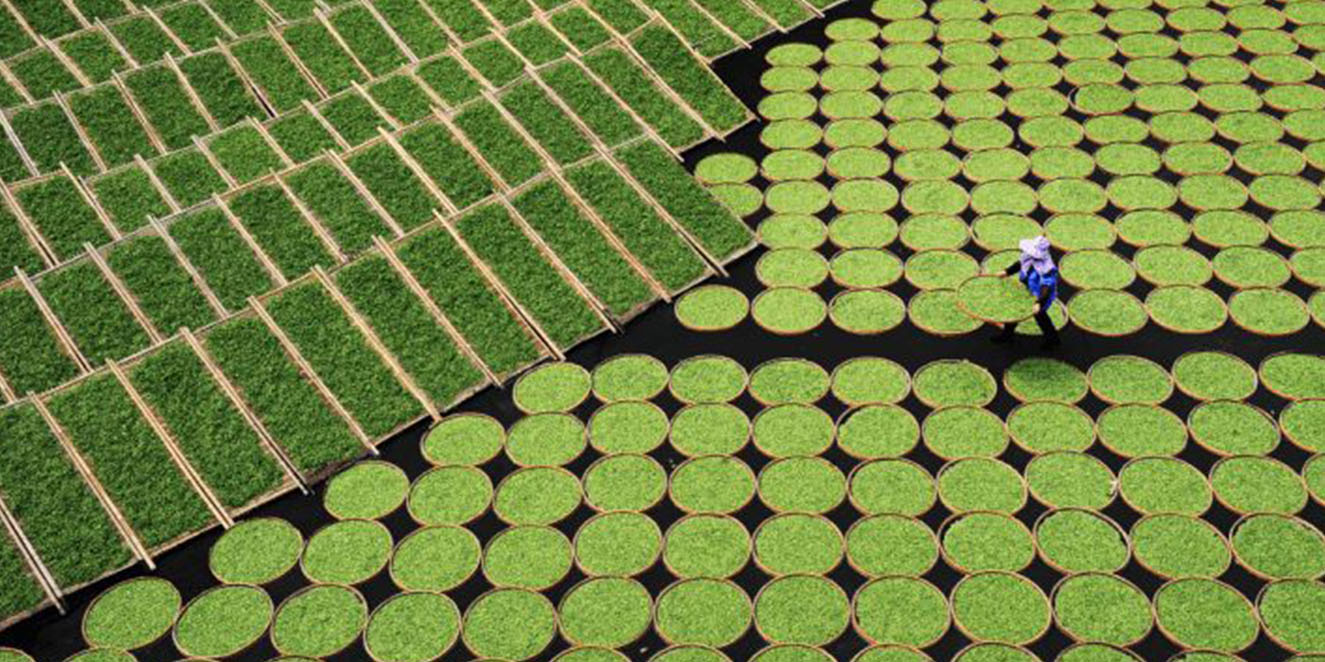
.png)
.png)
.png)
.png)
Meijiawu Tea Village is a famous production base of Longjing Tea in Hangzhou City. It used to receive many world-renowned celebrities from around the world and a number of state leaders from many other countries and regions such as the former Soviet Union, the United States, Vietnam, Romania and Cambodia.
History of Meijiawu
Meijiawu is an ancient village with a history of more than 600 years. As an important and the largest production base of Longjing Tea in Hangzhou, there are 500 households living in the village. The tea plantation covers an area of more than 800,000 square meters. Meijiawu Tea Village is the tourist area for sightseeing, combining farmhouses and tea culture. Every year, millions of tourists from home and abroad come to visit. The whole village is surrounded by green mountains with picturesque scenery.
Products of Meijiawu
There are about 160 tea houses in the village. When there are visitors, they will introduce to them the history of tea, process of making tea and the functions of tea. In addition, there are also tea ceremonies. Every spring, visitors can pick tea leaves by themselves, learn tea culture and experience the rural life of tea farmers.
Tea produced at Meijiawu is of top quality of all the West Lake Longjing Tea. Every year there are four tea-leaves picking periods, based on the solar terms. The first period is right before Qingming (Pure Brightness, April 4 or 5), the second period is before Guyu (Grain Rain, April 19-21), the third period is during Lixia (Beginning of Summer, May 5 or 6), and the last period is one month after Lixia.
The tea dishes prepared at Meijiawu Tea Village feature light, fresh, smooth and slightly salty flavors. The tea dishes like Longjing Tea with shrimp, Biluo Tea with shrimp, Longjing fish slices and other dishes are the specialties. Recently there are some new dishes launched to meet the different tastes of visitors, such as carp soup with fresh tea water, tea water with crisp shell chicken and tea water with duck stew.
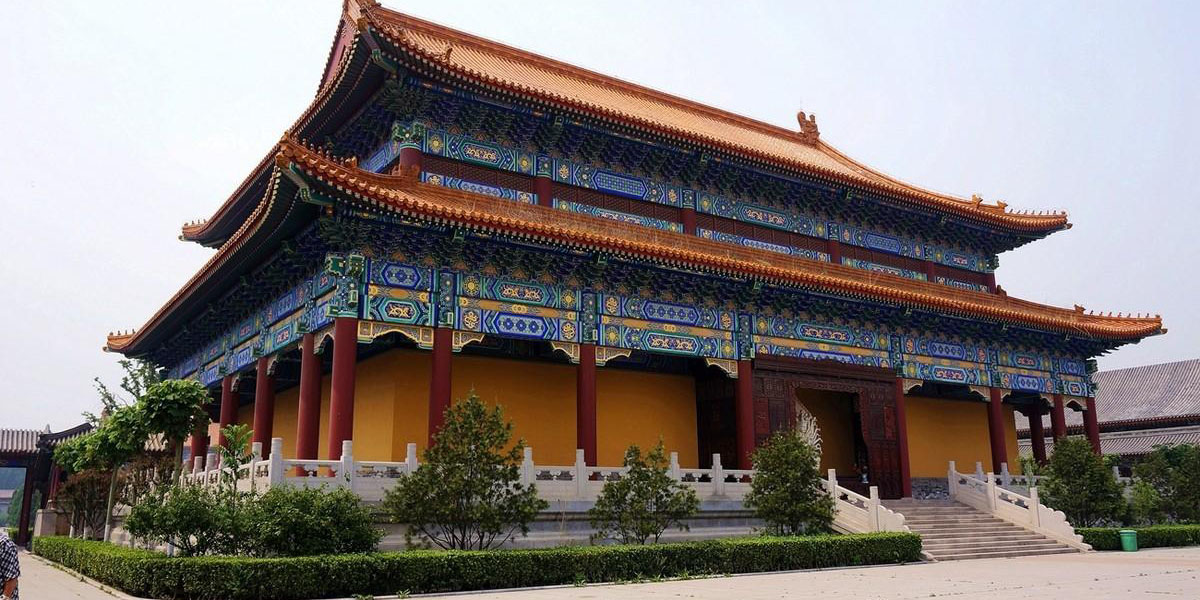
.png)
.png)
.png)
.png)
Located in the northwest part of Shanhai and tucked away amidst a jumble of charming turn of the century two-story cottages and small glass office Buildings, the Jade Buddha. Temple(yufosi 玉佛寺)is a spiritual oasis in the midst of a booming city.
The heavily renovated temple was built with Song dynasty architecture in 1918 to house two legendary Jade Buddhas. Its mustard yellow outer walls are shrouded with bamboo scaffolding and lined with queues of tourists and worshippers alike. Devotees carry clusters of burning joss sticks and bow in front of the Hall of Heavenly Kings(tianwangdian天王殿),a giant cavern that holds humbling statues of various golden and bearded arhats that tower over those who enter. Wander past the Grand and follow the signs to the Abbott Room, where the jade Buddhas resides.?
The two Buddhas in the About room were once part a magnificent five-piece jade collection brought to China from Myanmar by a Chinese monk. the larger of the two Buddhas is encrusted in jewels. it was hand-chiseled and polished from white jade and stands 6.2 feet (1.9m)tall. On each side of this statue is a famous collection of Buddhists texts printed from woodblocks in 1890. At 35 inches (90cm),the other Buddha amaller, but is just as impressive with light glinting off its elegant jade body as it reclines languidly. A gnarled sandalwood trunk with carved Chinese characters and displays of late-Qing handicrafts add to outside the Abbot room are several gift shops selling everything from paper prints to traditional Chinese paintings to sandalwood fans and Buddha figurines carved from pure jade.
Crossing the courtyard back to the entrance to the Abbot room is a corridor that takes visitors to a splendid traditional Chinese teashop. The temple entrance fee includes a ticket to sample different sets of tea that can remedy everything from headaches to indigestion There's a polite sales pitch included, but all of the proceeds go to the temple. Across the hall from the tearoom is a vegetarian restaurant that serves all manner of lunch dishes, many of which are fashioned Enclosed in a walled courtyard is a Buddhist research library that has some English books. the hald monks and jade Buddhas provide a visual and spiritual break from Shanghai;s frenetic drive to buy, eat and spend Located in the northwest part of Shanhai and tucked away amidst a jumble of charming turn of the century two-story cottages and small glass office Buildings, the Jade Buddha. Temple(yufosi 玉佛寺)is a spiritual oasis in the midst of a booming city.
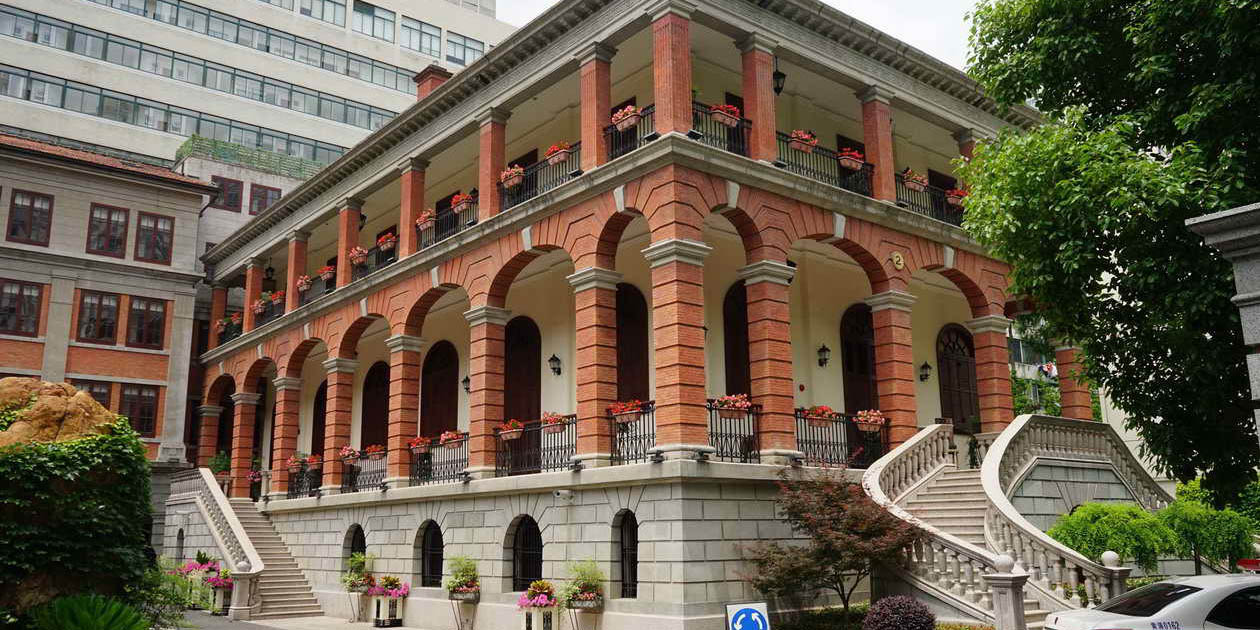
.png)
.png)
.png)
.png)
Introduction
The Former French Concession lasted from 1849 until 1943 a time during which the French consulate office was allowed to recreate 66 hectares of land into their liking to improve Franco Chinese relations and expand the consulate’s land. In addition to French government officials, other wealthy civilians from Britain, Russia and the USA also lived in this elegant location creating it into what it is today.
The area has managed to stay fashionable over the years and has since gained immense development characterized by large buildings, mainly upmarket residential, office towers, restaurants and enormous shopping malls with a mix of boutiques, galleries, bars and cafes spread out on location.
Major attractions and activities to do on a visit
French Concession Streets
A visit to the neighborhood clearly brings out a perfect juxtaposition from other Shanghai neighborhoods with its unique architecture and tree lined streets. There is a lot to do here, long relaxing strolls through the perfect boulevards and narrow alleyways protected by wrought iron gates are perfect for reflecting the sylvan way of life and just how life used to be when the French were dominating the area.
Fuxing Park
A European oriented park in design with open spaces, boulevards, cafes and clubs dotted throughout. It gets very lively with people showcasing the art of water calligraphy, elderly couples dancing away to classical hits as others practice tai chi and players enjoy board games like cards, mahjong and Chinese chess.
Soong Ching Ling, Sun Yat Sen and Zhou Enlai residences
These residents adapting European country style architecture used to be offices and personal homes but now they have been converted and very well preserved museums telling the story of the Communist revolution in China and particularly Shanghai with many photos and artifacts in addition to a garage with a number of formerly state owned cars.
Tianzifang
An Old French Quarter which has managed to retain its organic feel in terms of architecture where international brands as well as local designer merchandise are found in plenty. The traditional alleys and shikumen most featured Shanghai dwellings which mix western culture and traditional style of Han Nationality are home to art galleries, cafes, restaurants, studios and craft stores.
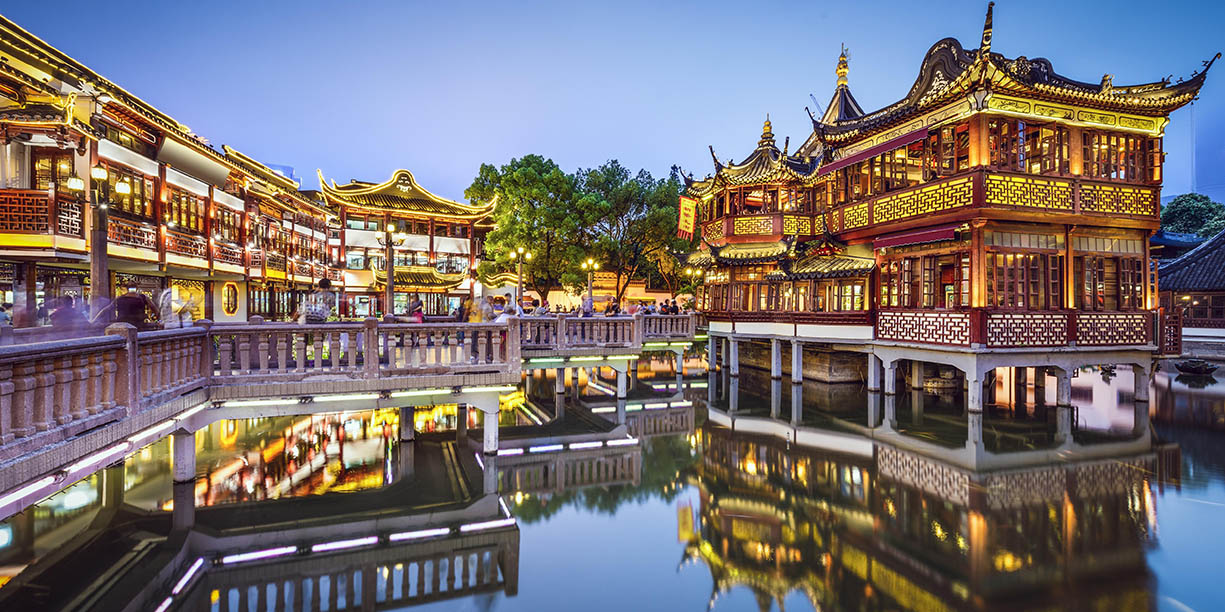
.png)
.png)
.png)
.png)
Yu Garden, a well-known classical garden, is located in south Shanghai. Itsoriginal master, Mr. Pan, was once a governor in Sichuan during the Ming Dynasty. The garden was constructed in 1558, followed by a pause because of alack of fund and finally completed twenty years later. Pan family underwent adecline afterwards and its offspring anxiously sold out the garden at a verylow price to businessman. Later, merged with City God Temple, the Yu Garden be came its “Western Garden”. During the period of the Opium War and the Taiping Heavenly Kingdom, foreign invaders repeatedly garrisoned there. Yu Garden,therefore, suffered severe damages and lost some original luster.
After1949, Yu Garden was been renovated many times. The recent one, in 1987,reconstructed the eastern part. In 1982, Yu Garden was marked as one of the key preservation sites of the State House and the most excellent gardens in the south. It has 40 scenic spots, including pavilions, terraces, towers, ponds and rock eries, with over 10 thousand tourists every day. No wonder people say that tourists must visit Yu Garden and City God Temple Shopping Center in Shanghai.
Abeautiful lotus pond, with a bridge and a pavilion in the center, is in from ofYu Garden. The pavilion was rebuilt in 1784 and converted to a tea house 90years ago. This tea house is beloved by many senior people for they enjoy thetea and leisure.
People can have a stroll in the bridge with nine windings under the tea house,enjoying the scenery along the bank. Each winding reveals a different view.There are celebrations nearby on special festivals, such as the Lantern Festival. It is especially bustling and lively then.
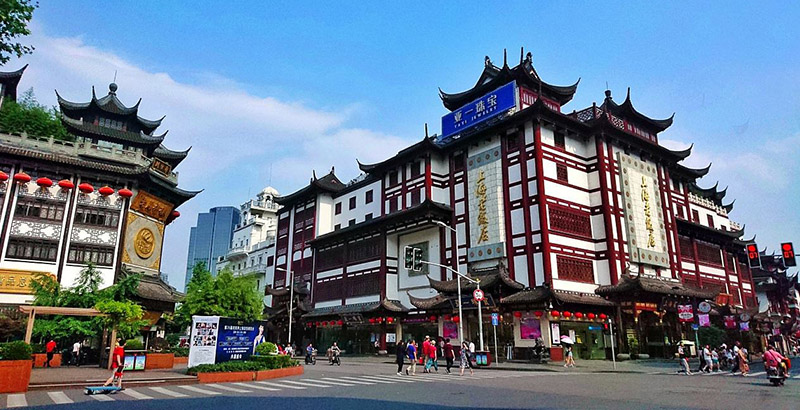
.png)
.png)
.png)
.png)
The City God Temple of Shanghai (Chinese: 城隍庙; pinyin: Chénghuángmiào) [1] is a temple in the old city of Shanghai, China, and is today the central feature of a large retail and entertainment district. The temple is colloquially known in Shanghai as the "Old City God Temple", in reference to a later, "New City God Temple" which no longer exists.
History
Regardless of size, many walled cities in ancient China contained a temple dedicated to one or more immortal or god as the spirit(s) or protector(s) of the city.
The City God Temple in Shanghai originated as the Jinshan God Temple, dedicated to the spirit of Jinshan, or "Gold Mountain", an island off the coast of Shanghai. It was converted into a City God Temple in 1403, during the Yongle era of the Ming dynasty.
During the Qing Dynasty, the temple grew popular. Residents of the old city as well as nearby areas visited the temple to pray for good fortune and peace. The temple reached its largest extent in the Daoguang era. The popularity of the temple also led to many business to be set up in the area, turning the surrounding streets into a busy marketplace.
In 1951, the Board of Trustees of the City God Temple was dissolved, and the temple was handed over to the Shanghai Taoist Association that converted it into a Taoist center. The institution made changes to the temple, removing statues representing folk Underworld personalities such as Yama, the judge of the dead, and placing an emphasis on Taoist spirituality instead.
During the Cultural Revolution, the temple was closed down and used for other purposes. For many years, the main hall was a jewellery shop. In 1994, the temple was restored to its former use as a temple, with resident Taoist priests. The Temple, together with nearby Yuyuan Garden and the surrounding streets, are now part of a large pedestrian zone dedicated to restaurants and retail.
The present structure was re-built in the 1930s during the Republic of China era in the traditional style, following two fires that destroyed the building. The main halls, however, are built with reinforced concrete.
A second complete restoration took place between 2005 and 2006. In October 2006 the place of worship was reopened and reconsecrated by Taoist clergymen.
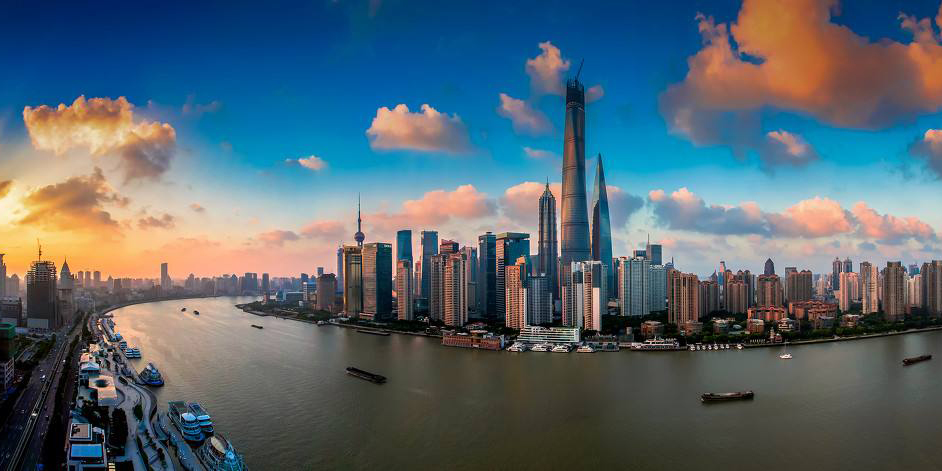
.png)
.png)
.png)
.png)
The Bund, Shanghai
The Bund, also called Zhongshan Dong Yi Lu (East Zhongshan 1st Road), is a famous waterfront and regarded as the symbol of Shanghai for hundreds of years. It is on the west bank of Huangpu River from the Waibaidu Bridge to Nanpu Bridge and winds 1500 meters (0.93 mile) in length. The most famous and attractive sight which is at the west side of the Bund are the 26 various buildings of different architectural styles including Gothic, Baroque, Romanesque, Classicism and the Renaissance. The 1,700-meters (1,859 yards) long flood-control wall, known as 'the lovers' wall', located on the side of Huangpu River from Huangpu Park to Xinkai River and once was the most romantic corner in Shanghai in the last century. After renovation, the monotone concrete buildings that lovers leaned against in the past have been improved into hollowed-out railings full of romantic atmosphere. Standing by the railings, visitors can have a 'snap-shot' view of the scenery of Pudong Area and Huangpu River.
History
Before the 1840s, the Bund was a muddy narrow lane with tall reeds. It initially became a British settlement. After Shanghai was established as the trading port in 1846, a street was paved there and the riversides were reinforced. Then, rows of commercial buildings were constructed. As the UK Concession, a building boom at the end of 19th century and beginning of 20th century led to the Bund becoming a major financial hub of East Asia. It was the centre of the city's politics, economy and culture more than a hundred years ago, consulates of most countries and many banks, businesses and newspaper offices were settled there, and that's why we have these art-like buildings.
In the late 1970s and early 1980s, with the thawing of economic policy in the People's Republic of China, buildings on the Bund were gradually returned to their former uses. Government institutions were moved out in favor of financial institutions, while hotels resumed trading as such.
In the 1990s the Shanghai government attempted to promote an extended concept of the Bund to boost tourism and land values in nearby areas, as well as to reconcile the promotion of 'colonial relics' with Socialist ideology. From 2008, a major reconfiguration of traffic flow along the Bund was carried out. After a 33-month upgrade, the Bund was reopened to visitors on March 28, 2010. The veil on the new Bund was finally lifted.
After the reconstruction, most transit vehicles which originally got through the ground level roads began to make their way through the new underground tunnel. The original eleven driveways on the Bund ground were compressed into four two-way lanes. Thus more space was left for expending the four major squares: Huangpu Park, Chen Yi Square, the Bund Financial Square, and the Observatory Plaza. After being reconstructed, the new Bund waterfront is neat and atmospheric. The public activity space is expansive embracing more visitors.
The Bund has been called a 'museum of international architecture' and indeed it was and still is. But it was also much more. Here were located the banks, hotels, exclusive clubs, press organizations and headquarters of international concerns. The twenty-six major structures, of various heights along approximately 1.5 kilometers of Zhongshan Lu and the Huangpu River, have changed little externally since the 1930s. All were constructed in western-inspired styles. After the establishment of the People's Republic of China in 1949 the old tenants were gone. They had already been impacted by the wartime crises. Many of the structures were subdivided into government offices, department stores or storage areas. Furnishings were sold off or destroyed, and architectural features covered.
City Sculptures
Near the Nanjing Road intersection stands what is currently the only bronze statue along the Bund, a statue of Chen Yi who was the first Communist mayor of Shanghai. At the northern end, along the riverfront, is Huangpu Park, in which is situated the Monument to the People's Heroes - a tall, abstract concrete tower which is a memorial for those died during the revolutionary struggle for Shanghai dating back to the Opium Wars. As the victor of the war, the British nationals in the Bund put up a 'cross' to mark their 'aggression' which is the Red Rock Monument. On the south side of the Bund Garden Bridge stands an Ever Victorious Army Monument, which was funded by Li Hongzhang to commemorate the officers and soldiers of the Victorious Army who died in the battles against the Taiping Army from 1862 to 1864. Located in front of Shanghai Custom House at Jiujiang Road, the statue Hart was regarded as the most famous statue in Shanghai history. Hurt, British Northern Irishman, had served as Secretary General of Chinese Customs up to 48 years. Another famous sculpture is the World War Monument which was the largest one in the city at that time. It was made to commemorate the soldiers who died in the World War I coming from Shanghai.
Night View
It is worth a visit to see the florid night view of the Bund. Under the tenet of keeping harmony and unity, the use of period lamp-posts is in keeping with the aesthetic feeling of the building structures. It fully exhibits the magnificence of the various buildings of different architectural styles and make up of the best night scene of Shanghai together with the colorful lights floating in the river and the flashing lights on the far side of the river. The night piece of the Bund was named in 'Shanghai top ten night light views' in 2009.
Further reading: Huangpu River Cruise
Tip: There is an eco-friendly mobile charging system with solar photovoltaic power generation at the photography point of the Bund scenic area. It can provide the power of the computer for photographers to print the photos, as well as mobile phone emergency charging service for visitors.
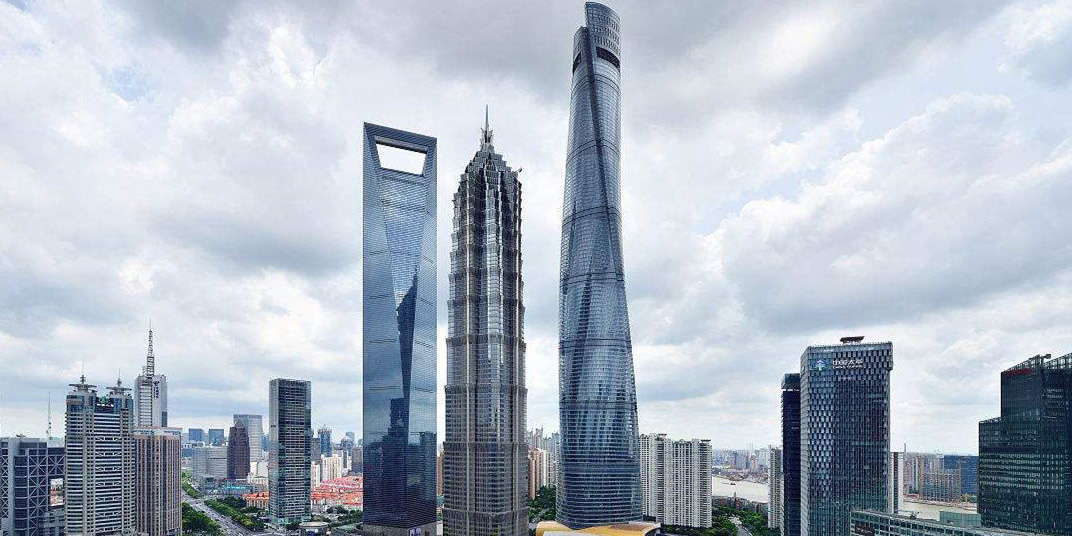
.png)
.png)
.png)
.png)
Introduction
Shanghai tower is one of China's tallest buildings standing at a dizzying 632 meters high with 127 floors and 5 basement levels. The building design is such that it spirals upward in a snake like manner twisting one degree per level making a 120 degree rotation a design that was put into use to protect the building structure from string winds making it as stable as possible. It also has a double layer wall structure forming the building facade creating a form of insulator which also improves indoor air quality.
Major attractions and activities to do on a visit
A tour to this tower brings tourists to a fantastic height on the observatory deck on a super fast elevator where they can take in unique panoramic views of the Huangpu River, other skyscrapers like the World Financial Center, the Bund and Jin Mao Tower. The panoramic views across Shanghai’s skyline are very rewarding especially during sunset and at night. In addition to this, there is an exhibition on the 125th and 126th floor of the Shanghai Eye which is unmatched and shouldn’t be missed out.
Shanghai Eye
The eye is situated on the 125 to 126th floor with damper to stabilize it. Exploring this level isn’t for the faint hearted yet it is very thrilling.
Shanghai Guanfu Museum
This displays the long history of Chinese civilization with exhibits of ceramics, statues, gold wares and porcelain.
World's Second Highest Hotel
Visit and be part of this luxury hotel that’s located on the 84th to 110th floors that is currently the world’s second highest hotel.
Includes & Excludes
Price includes
![]() Entrance tickets
Entrance tickets
![]() Private vehicle and driver
Private vehicle and driver
![]() English speaking tour guide
English speaking tour guide
![]() Lunch as listed
Lunch as listed
![]() Airport pickup and drop off
Airport pickup and drop off
![]() One bottled water per day per person
One bottled water per day per person
![]() Hotel(if selected)
Hotel(if selected)
![]() Travel insurance(if selected)
Travel insurance(if selected)
![]() West Lake cruise
West Lake cruise
Price excludes
![]() Tipping to tour guide and driver
Tipping to tour guide and driver
![]() Dinner
Dinner
Booking Notes
How to Choose Tour Type?
Affordable Group Tour:
At least 2 people bookable.
Our small group tour is around 15 peoples picked up from different airline.
Suitable for tourists with limited budget and who would like to travel with others from different countries.
If you stay in a hotel, please go to our meeting point on your own.
Tour duration is fixed, if you would like to stay longer or shorter time at attractions. Please choose private tour.
Best Value Private Tour:
More flexible and time-saving.
No need to wait for other tourists.
Flexible schedule.
Possible to be customized for your own itinerary.
A privet tour guide and the air-conditioned vehicle will be at your service.
Pick up and drop off according to your time and place (Hotel or Airport)
Your tour guide will decide attractions visiting order on the tour reasonably.
How to Book?
1. You can choose your favorite tour and book online, fill in your booking information(full name, arrival & departure time, flight number, email, tel etc). Please confirm and leave note your landing at Terminal 1 or Terminal 2 in Pudong or Hongqiao International Airport.
2. Choose to pay the deposit or full payment. We accept payment by PayPal, Credit Card, Alipay or Wechat, either USD, AUD, EURO or RMB in cash on the tour day. Confirmation will be received at the time of booking.
3. Before you arrive in Shanghai, the exact pick-up time will inform by email. Usually, your tour guide starts waiting when you landed at Shanghai airport.
How to Apply for 24/144 Hours Free Visa Permit?
1. You should apply for a transit VISA after you landed at the airport.
2. It only applies to passengers who transit through from one country to another country. (e.g New York-Shanghai-Tokyo)
The destination and place of departure cannot be the same.(e.g Bangkok-Shanghai-Bangkok).
24-Hour Without VISA, TWOV for almost all countries by air, cruise or train transiting in China. Counted from the landing time, multiple stops.
How to apply the 24 hours free transit VISA and Policy :
How to apply the 144 hours free transit VISA and Policy:
Cancellation Policy
If you inform us at least 24 hours in advance before the scheduled pick-up time, there is no cancellation fee.
If you inform us within 24 hours in advance, 100% cancellation fee.
Reviews

 chinatoursnet
chinatoursnet
benniejay

mirceao455
Bucharest, Romania
2funworldtravers
pedro148595
Mdezarraga2

stevensE4605SC
Durban, South Africa

NYCfoodiegirl
New York, NY

NancyVaB
aklein729
Sreesagubadi
valsayn, Trinidad and Tobago
Got Question & Quick Answer
Dexule Suite
Hotel Position : Plaza del Angel, 12, 08002 Barcelona, Spain
Opened:2000
Number of rooms:108
Postcode:100007
Redecorated:2017
The Ping'anfu Hotel (Ping'anfu Binguan) is a luxury hotel located in the hustle and bustle of the city center. It is only 4 kilometers from the railway station and 28 kilometers from the airport. This hotel provide comfortable rooms, ranging from standard doubles to deluxe suites. Facilities in rooms include international direct dial telephones, satellite televisions, central air conditioning and mini bars. Room service is available on request. Guests of the hotel will also have the chance to relax in the sauna and massage center. The hotel has numerous restaurants, mostly serving Chinese cuisine.
Check-in & Check-out
Check-in from 14:00
Check-out before 12:00
Smoking is now strictly prohibited within all public and enclosed spaces in Beijing. This hotel will NOT offer smoking rooms.
Opened:2000
Number of rooms:108
Postcode:100007
Redecorated:2017
